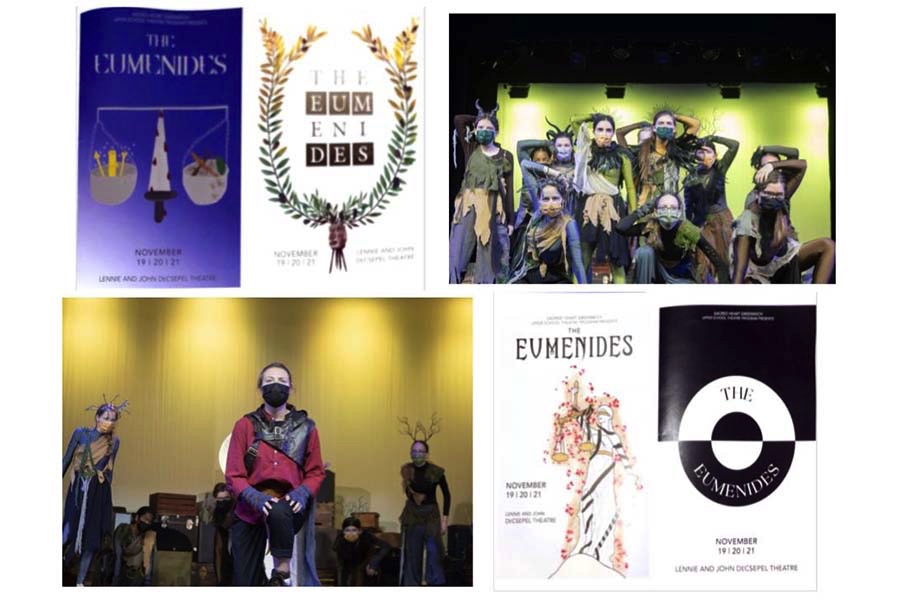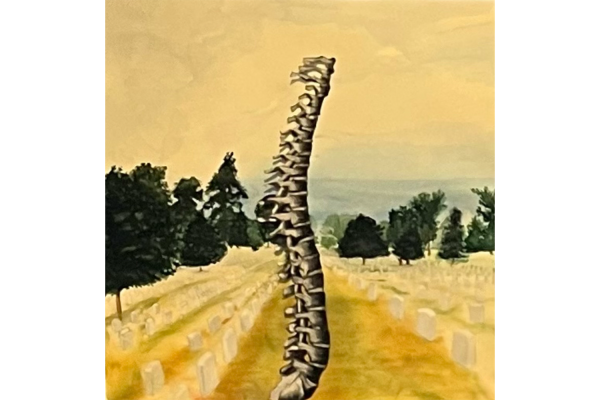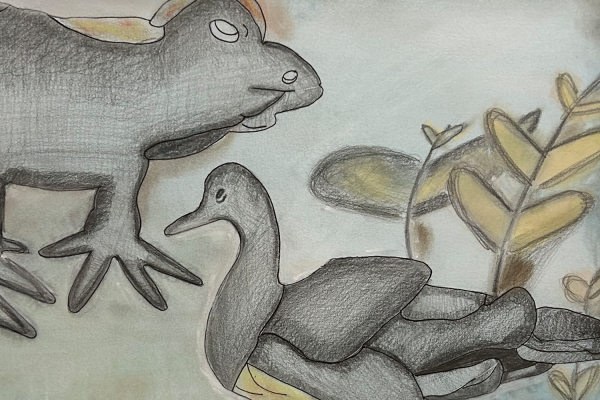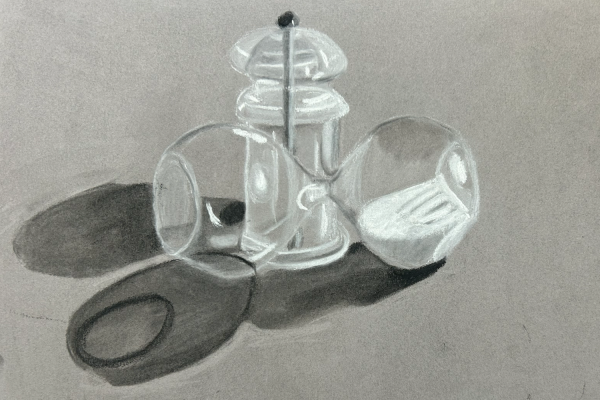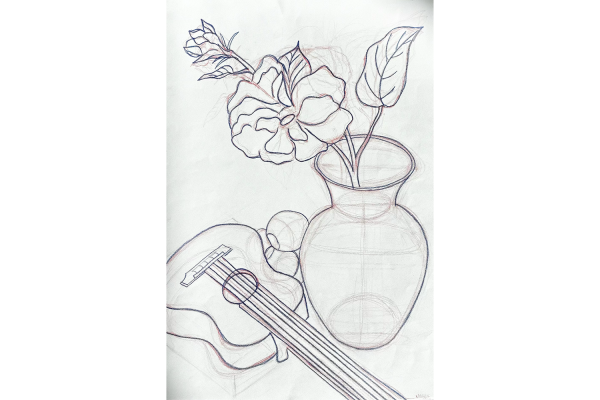The Eumenides explores the fine line between justice and vengeance
The cast and crew of The Eumenides perform in the Lennie and John DeCsepel Theater for the first time since March 2020.
The Sacred Heart Greenwich Theatre Department presented The Eumenides as this year’s fall play. Under the guidance of Miss Michaela Gorman ‘05, Upper School Drama Teacher and Director of Drama Productions, and Miss Danielle Gennaro ‘05, Bell Choir Director, the cast rehearsed for three months. The cast performed for Upper School students and faculty November 19 at 7 p.m. Performances of The Eumenides opened to guests of the cast and crew November 20 at 3 p.m. and 8 p.m., and November 21 at 3 p.m.
This year marked Sacred Heart’s first in-person production since the 2020 performance of Matilda The Musical. The casts of Much Ado About Nothing and Annie performed through a virtual streaming platform last fall and spring. The cast of The Eumenides adhered to COVID-19 guidelines by rehearsing and performing with masks on and audience members wore masks for the duration of the show. Students and faculty watched the show separately from invited guests.
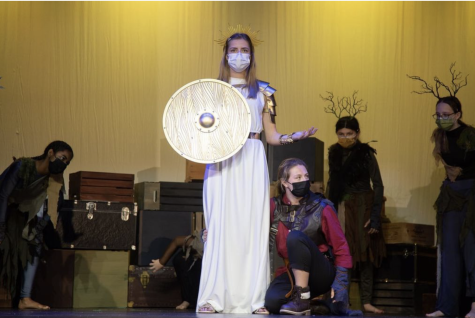
Greek playwright Aeschylus wrote The Eumenides for performances at competitions and festivals. Greek tragedies served to educate the audience and explored political, social, and ethical issues. The Eumenides is the final play in the trilogy The Oresteia, following Agamemnon and Libation Bearers. Aeschylus won first prize for The Oresteia at Dionysia, a festival in Athens honoring Dionysus, the god of wine. This festival occurred annually in fifth-century Athens, according to brown.edu.
The trilogy is a Greek tragedy, focusing on justice and vengeance, according to worldhistory.org. Agamemnon is a play about the murder of Agamemnon, a king of Mycenae, by his wife, Clytemnestra. Clytemnestra kills her husband because he sacrifices their daughter to the gods without her knowledge. Libation Bearers introduces the son of Clytemnestra and Agamemnon, Orestes. Seeking justice for his father’s death at the hand of his mother, Orestes murders Clytemnestra. In the final play, The Eumenides, Orestes is on trial for his matricide.
The original version of The Eumenides begins after the murder of Clytemnestra by Orestes. Seniors Charlotte Burchetta and Isabella Stewart play Orestes and Clytemnestra, respectively. Ancient Greek audiences typically watched performances of Aeschylus’s trilogy in one sitting. To ensure that the audience understood the plot, Miss Gorman added a pantomimed scene in which Clytemnestra dies and a scene in which seniors Heidi McGannon and Angélique Wheeler summarize the two prior plays in their roles as the historian and professor, respectively.
In one of the opening scenes in the play, the ghost of Clytemnestra asks the Furies, the Greek goddesses of vengeance, to find Orestes and avenge her death. Junior Maddy Abramson played the Pythia, who discovers Orestes and the Furies at Apollo’s temple. The Pythia is the priestess of Apollo’s temple and the Oracle of Delphi. Zöe Young played Apollo, who supports Orestes’s matricide and offers him protection on his journey to safety.
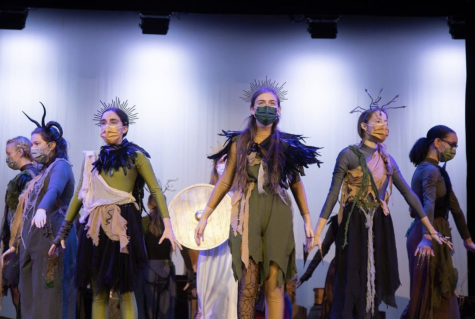
Orestes travels to Athens to escape the Furies and asks for Athena’s protection. The Furies join him in Athens and call for his death. Senior Isabelle Lehrman had the role of Athena. Athena puts Orestes on trial as a way of deciding his fate. In the trial, Orestes can either justify his matricide or receive a death sentence. The Chorus of Furies, led by freshman Moira Marangi and junior Molly Kriskey, serves as the prosecution, calling for his conviction. Athena enlists the help of ten jurors to decide the case. Angélique, Heidi, and sophomore Lindsay Taylor served as the jurors. Athena’s vote is the tie-breaker and she votes to acquit Orestes.
Orestes returns to his home and the Furies, outraged, promise to ruin Athens. Athena placates the Furies by offering them positions as esteemed members of the Athenian government. The Furies accept Athena’s offer and become kind beings, rather than focusing solely on revenge, according to worldhistory.org. The Eumenides is a later name for these benevolent Furies, likely adopted earlier than the fifth-century BCE, according to mythologysource.com.
Zöe reflected on her experiences acting in this production. Acting allows Zöe to don a new persona and experience a new perspective. Theatre is a way for her to bring forth different parts of her personality and channel a new character.
“In the show, I play the god Apollo who is a very arrogant, fearless, and demanding character,” Zöe said. “Through Apollo, I had to draw out the fierce side of me in order to portray his strong emotions. I learned to tap into the traits of myself I don’t normally use challenging me to be bold, loud, and confrontational.”
Zöe enjoys the challenge of using hidden aspects of herself to play different characters. She also enjoys the close-knit nature of the Sacred Heart theatre community. The cast of the plays and musicals rehearse together six times a week for three months, which allows them to become a family.
“There are so many aspects of theatre and performing that I love,” Zöe said. “I love getting to step out of the reality of my everyday life and step into a world of possibility and imagination, bringing stories to life. The process of portraying someone or something apart from myself allows me to see things from a different perspective and use certain facets of myself I am not able to use outside of acting. My favorite part of being a part of the Sacred Heart Theatre program is coming together with other passionate artistic individuals and becoming a close-knit unified group by the end of the season.”
Featured Image by Gabrielle Wheeler ’23

In Gabrielle’s third year on the staff of the King Street Chronicle, she is delighted to return as Head Content and Graphics Editor. Gabrielle is eager...

